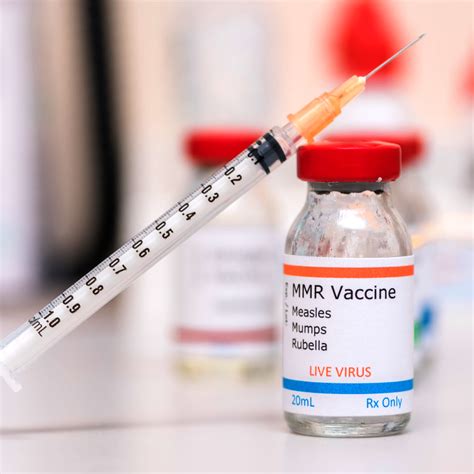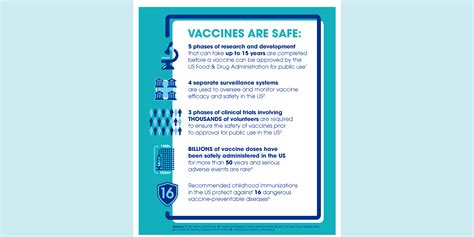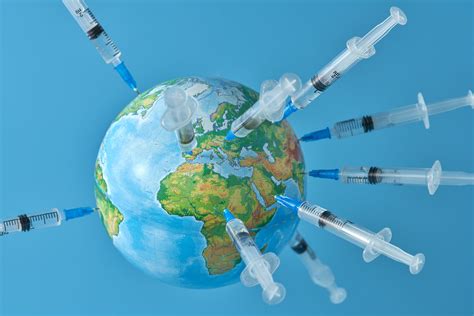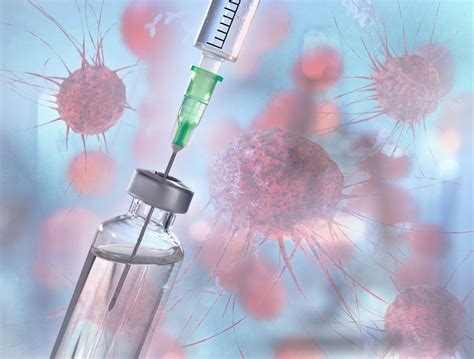Intro
The MMR vaccine is a crucial component in the prevention of rubella, a highly infectious disease that can have severe consequences, especially for pregnant women and their unborn babies. Rubella, also known as German measles, is a viral infection characterized by a distinctive rash, fever, and swollen lymph nodes. Before the widespread use of the MMR vaccine, rubella was a common childhood illness, but it can also affect adults who have not been vaccinated or have not had the disease. The importance of the MMR vaccine in controlling and preventing rubella outbreaks cannot be overstated, as it has significantly reduced the incidence of the disease worldwide.
The MMR vaccine is a combination vaccine that protects against three serious diseases: measles, mumps, and rubella. The vaccine contains weakened live viruses for each of the three diseases, which stimulates the body's immune system to produce antibodies that can recognize and fight these viruses. This means that if an individual is exposed to any of these diseases after being vaccinated, their immune system will be able to respond quickly and effectively to prevent the disease from developing. The MMR vaccine is typically administered in two doses, the first dose given to children around 12 to 15 months of age and a second dose around 4 to 6 years of age.
The impact of the MMR vaccine on public health has been profound. Before its introduction, rubella epidemics occurred every 6 to 9 years, resulting in significant morbidity and mortality. The vaccine's effectiveness in preventing rubella is estimated to be around 90% after two doses, which is crucial for achieving herd immunity and preventing outbreaks. Herd immunity is important because it protects individuals who cannot be vaccinated due to certain medical conditions, such as those with weakened immune systems. By reducing the number of susceptible individuals in a population, the spread of the disease is significantly reduced, thereby protecting vulnerable members of the community.
How the MMR Vaccine Works

The MMR vaccine works by introducing a small, harmless piece of the virus or a weakened form of the virus to the body. The immune system then recognizes the virus as foreign and mounts an immune response, which involves the production of antibodies and the activation of immune cells. These antibodies and immune cells are specifically designed to target the measles, mumps, and rubella viruses, providing long-term immunity against future infections. The vaccine's mechanism of action is complex and involves multiple components of the immune system, including both humoral immunity (mediated by antibodies) and cell-mediated immunity.
Benefits of the MMR Vaccine
The benefits of the MMR vaccine are numerous and well-documented. Some of the key advantages include: - **Prevention of Disease**: The most obvious benefit is the prevention of measles, mumps, and rubella, which can have serious complications, especially in certain high-risk groups. - **Reduction in Mortality**: By preventing these diseases, the MMR vaccine has significantly contributed to a reduction in mortality rates associated with measles, mumps, and rubella. - **Herd Immunity**: The vaccine helps achieve herd immunity, protecting individuals who are unable to receive the vaccine due to medical reasons. - **Cost-Effectiveness**: Vaccination programs are highly cost-effective, reducing the economic burden associated with treating and managing outbreaks of these diseases.Side Effects and Safety Concerns

Like any vaccine or medication, the MMR vaccine can cause side effects, although these are generally mild and temporary. Common side effects include redness and swelling at the injection site, fever, and a mild rash. More serious side effects are rare but can include allergic reactions and, in very rare cases, conditions such as thrombocytopenia (a low platelet count). Safety concerns regarding the MMR vaccine have been extensively studied, and numerous scientific investigations have found no link between the vaccine and conditions such as autism, a concern that was initially raised by a now-discredited study.
Vaccine Administration and Schedule
The administration of the MMR vaccine follows a specific schedule to ensure optimal protection against measles, mumps, and rubella. The first dose is typically given to children at 12 to 15 months of age, with a second dose given at 4 to 6 years of age. This two-dose schedule is crucial for achieving full protection, as a single dose may not provide adequate immunity against all three diseases. Adults who have not been vaccinated or do not have evidence of immunity should also receive the MMR vaccine, especially if they are in high-risk professions, such as healthcare workers, or if they plan to travel to areas where these diseases are common.Global Impact and Challenges

The global impact of the MMR vaccine has been significant, with a substantial reduction in the incidence of measles, mumps, and rubella worldwide. However, challenges persist, particularly in regions with limited access to healthcare services, conflict zones, and areas with vaccine hesitancy. Outbreaks of these diseases can still occur, highlighting the need for continued vaccination efforts and public health campaigns to maintain high vaccination coverage rates. The World Health Organization (WHO) and other global health authorities have set goals for the elimination of measles and rubella, which will require sustained efforts to improve vaccine access and address issues of vaccine hesitancy.
Addressing Vaccine Hesitancy
Vaccine hesitancy, or the reluctance to vaccinate, poses a significant challenge to achieving and maintaining high vaccination rates. This hesitancy can stem from misconceptions about vaccine safety, efficacy, and the diseases they prevent. Addressing vaccine hesitancy requires a multifaceted approach, including public health campaigns, education, and community engagement. Healthcare providers play a crucial role in addressing concerns and providing accurate, evidence-based information to parents and individuals considering vaccination.Future Directions and Research

Research into vaccines, including the MMR vaccine, is ongoing. Future directions include the development of new vaccine technologies, such as mRNA vaccines, which have shown promise in clinical trials. Additionally, there is a focus on improving vaccine delivery systems, especially in low-resource settings, to enhance accessibility and efficacy. The development of combination vaccines that protect against multiple diseases is also an area of active research, aiming to simplify vaccination schedules and improve compliance.
Improving Vaccine Accessibility
Improving vaccine accessibility is critical for achieving global health goals related to the control and elimination of vaccine-preventable diseases. This involves not only the development of new vaccines and technologies but also the strengthening of healthcare systems, particularly in underserved areas. Initiatives such as the Global Vaccine Action Plan and efforts by organizations like Gavi, the Vaccine Alliance, aim to increase access to vaccines and immunization services worldwide.To further understand the MMR vaccine and its role in preventing rubella, it's helpful to consider some frequently asked questions about the vaccine and the diseases it prevents.
What are the common side effects of the MMR vaccine?
+Common side effects of the MMR vaccine include pain, redness, or swelling at the site of injection, fever, and a mild rash. Serious side effects are rare.
Can the MMR vaccine cause autism?
+No, extensive scientific research has found no link between the MMR vaccine and autism. The initial study suggesting a link has been discredited and withdrawn.
How effective is the MMR vaccine in preventing rubella?
+The MMR vaccine is approximately 90% effective in preventing rubella after two doses, making it a crucial tool in controlling and preventing outbreaks of the disease.
In conclusion, the MMR vaccine plays a vital role in the prevention and control of rubella, a disease that can have serious consequences, particularly for vulnerable populations. Through its mechanism of action, benefits, and the global impact it has had on reducing the incidence of measles, mumps, and rubella, the MMR vaccine is a testament to the power of vaccination in improving public health. As research continues to advance and address challenges such as vaccine hesitancy and accessibility, the importance of the MMR vaccine in protecting against these diseases will only continue to grow. We invite readers to share their thoughts on the importance of vaccination and how we can work together to ensure that everyone has access to life-saving vaccines like the MMR vaccine. Your comments and shares can help spread awareness about the critical role of vaccination in preventing infectious diseases and promoting global health.
